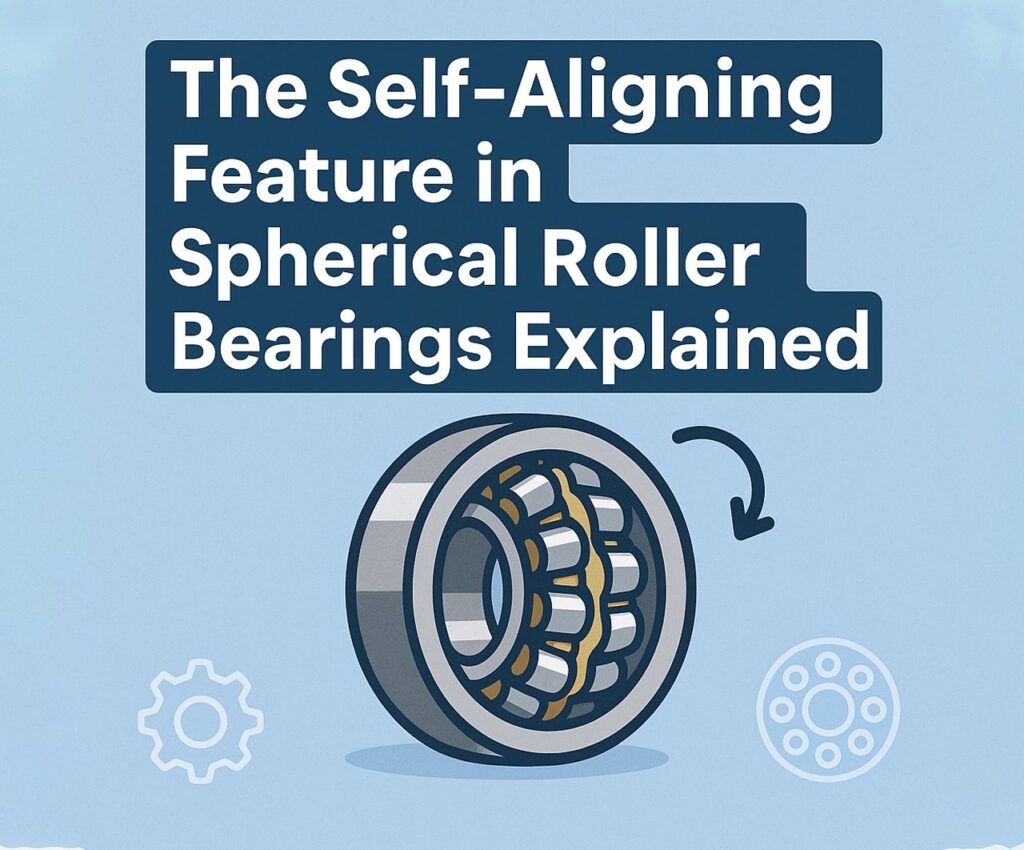When machines operate under demanding conditions—misalignment, vibration, or heavy loads—reliability depends on intelligent bearing design. That’s where the double row spherical roller bearing, sealed spherical roller bearings, and spherical roller bearing pillow block come into play. These advanced components are designed not only to carry high radial and axial loads but to automatically correct misalignment—making them a powerhouse in industrial performance.
In this article, we break down how the self-aligning feature works, why it matters, and how to choose the right spherical bearing for your system. Know More
What Makes a Spherical Roller Bearing Self-Aligning?
The secret lies in the geometry. A double row spherical roller bearing has two rows of barrel-shaped rollers positioned between an inner ring with two raceways and a spherical outer ring raceway. This curvature allows the bearing to compensate for shaft deflections or misalignments without affecting load capacity or performance.
The self-aligning property enables the bearing to maintain proper operation—even when the shaft is not perfectly aligned with the housing—making these bearings indispensable in tough, real-world conditions.
Why Self-Alignment Matters
In an ideal world, shafts are perfectly aligned, loads are evenly distributed, and bearings operate in clean, controlled environments. In reality:
- Shafts bend under load
- Housings shift due to temperature or vibration
- Installation errors introduce angular misalignment
Without a self-aligning bearing, these issues can lead to premature wear, overheating, and failure. The self-aligning action in a double row spherical roller bearing neutralizes these misalignment problems, often up to 1.5–3 degrees, depending on the bearing size and type.
Deep Dive: Double Row Spherical Roller Bearing
A double row spherical roller bearing is the most common design in this category. It’s built to carry high radial loads and moderate to heavy axial loads in both directions. What sets it apart is its ability to realign dynamically, making it suitable for situations where misalignment can’t be avoided.
Applications:
- Gearboxes
- Material handling
- Mining equipment
- Pulp and paper machinery
In systems where bearings are hard to access or operate continuously, the double row spherical roller bearing provides durability and ease of maintenance.
The Role of Sealed Spherical Roller Bearings
While open spherical bearings are suitable for many applications, sealed spherical roller bearings are becoming increasingly popular for several reasons:
- Contamination Protection: The built-in seals keep out dust, water, and abrasive particles.
- Lubrication Retention: Seals help maintain grease inside, reducing the need for re-lubrication.
- Extended Service Life: Less contamination and better lubrication mean longer operational life.
These features make sealed spherical roller bearings ideal for industries such as construction, agriculture, and mining—where equipment operates in dirty or wet environments.
Spherical Roller Bearing Pillow Block: The All-in-One Solution
When you need both housing and bearing in one, the spherical roller bearing pillow block is your go-to option. It combines a spherical bearing with a robust mounting block, designed to be bolted directly into machinery frames or base plates.
Key Benefits:
- Easy Installation: The bearing and housing arrive as a pre-assembled unit.
- Self-Alignment Included: The bearing compensates for minor installation misalignments.
- Versatility: Can be used in vibrating screens, conveyor belts, and crushers.
In industries where ruggedness and ease of replacement are essential, spherical roller bearing pillow block solutions simplify maintenance and reduce downtime.
How the Self-Aligning Feature Works Mechanically
Let’s break it down.
- The outer raceway is spherical—like a segment of a hollow ball.
- The inner ring and rolling elements can tilt slightly inside this outer raceway.
- This internal movement allows the bearing to maintain full contact even when the shaft is angled.
The result? Even under shaft misalignment, the double row spherical roller bearing maintains its load capacity and reduces stress concentration that would otherwise cause failure in non-self-aligning bearings.
Performance Under Load
One of the biggest advantages of spherical bearings is how well they distribute load. Thanks to the barrel-shaped rollers, the contact area between roller and raceway is large, which spreads the load over a wider surface and reduces localized stress.
Whether you’re dealing with dynamic, shock, or static loads, a spherical roller bearing pillow block or a sealed spherical roller bearings setup can handle it without deforming or failing prematurely.
Selection Tips for Engineers
Choosing the right self-aligning bearing depends on more than load and speed ratings. Here’s what to consider:
1. Operating Environment
If your system operates in a dirty, wet, or abrasive environment, go for sealed spherical roller bearings. They offer the best protection and longevity.
2. Mounting Configuration
Need easy installation? A spherical roller bearing pillow block may be the most efficient solution.
3. Misalignment Range
Not all spherical bearings handle the same misalignment. Check the manufacturer specs. Some tolerate up to 3° of angular misalignment.
4. Lubrication Needs
Consider how often lubrication is feasible. Sealed versions reduce maintenance intervals.
5. Shaft Size and Load
Larger shafts and higher loads typically call for a heavy-duty double row spherical roller bearing design.
Common Mistakes to Avoid
1. Ignoring Misalignment Tolerance
Every bearing has a limit. Exceeding the misalignment angle can lead to internal damage, even with a self-aligning design.
2. Using Unsealed Bearings in Dirty Environments
Open bearings may reduce upfront cost but lead to frequent failure if used in dusty or wet conditions. Opt for sealed spherical roller bearings.
3. Improper Mounting in Pillow Blocks
Even though spherical roller bearing pillow block assemblies simplify installation, they still require proper alignment, torque, and lubrication.
Innovations to Watch
Modern spherical bearings are not standing still. Current trends include:
- Sensor-integrated bearings for condition monitoring
- Smart lubrication systems paired with sealed spherical roller bearings
- Composite pillow block housings that are lighter and corrosion-resistant
Manufacturers are pushing the limits of what a double row spherical roller bearing can do—integrating them with IoT, improving sealing materials, and enhancing dynamic load capabilities.
Final Thoughts
Self-aligning bearings are not just a convenience—they’re a necessity in the unpredictable world of industrial mechanics. Whether it’s the adaptability of a double row spherical roller bearing, the resilience of sealed spherical roller bearings, or the simplicity of a spherical roller bearing pillow block, these components provide the flexibility, strength, and precision today’s machines demand.
Understanding how these bearings manage misalignment while maintaining full performance is the first step toward building more efficient, reliable systems.

